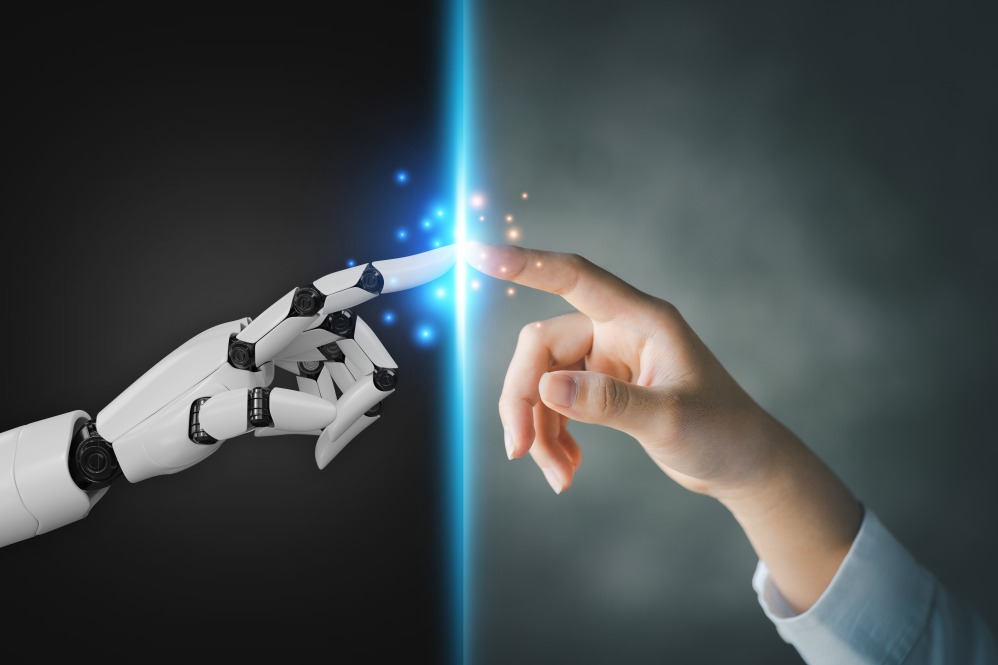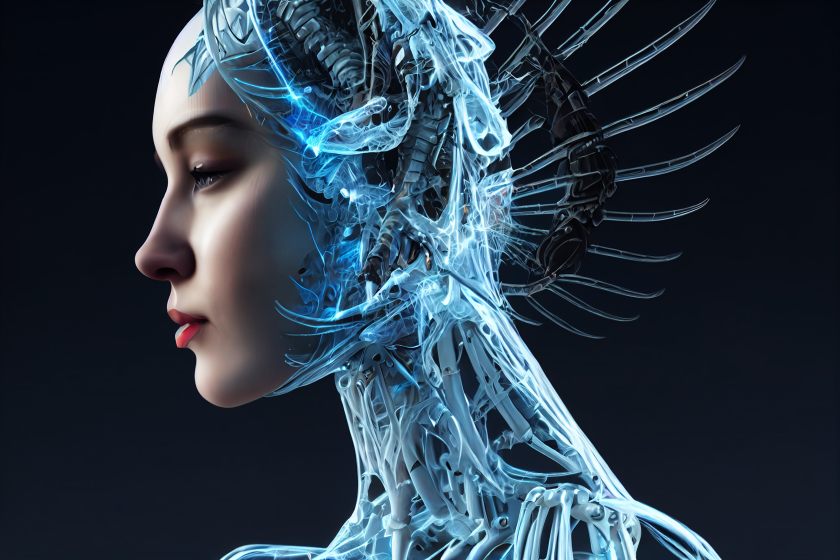Advances in technology are usually good things, but it has the side effect of making established processes obsolete. For example, the Industrial Revolution brought many changes during the 19th century. Cost-effective machines that required little human supervision exploded in popularity, displacing thousands of textile factory workers. These out-of-work laborers sought revenge by destroying these machines at night, costing thousands in damages. This unfortunate turn of events escalated to the point where the military had to get involved, and the revolutionaries, named “Luddites,” were either sent to prison or executed for their crimes.
Today, Luddite is a byword for people unwilling to embrace technological advancements. And with OpenAI’s flagship ChatGPT taking the world by storm and Microsoft, Google, and Meta racing to develop and improve their LLM-based AI, machine vs. human arguments are flaring up everywhere, and the word is being thrown all around the internet.
However, decrying technological advancements on the grounds of blind fear without considering their benefits never really worked well for anybody. It’s important to recognize that artificial intelligence is an immensely powerful tool that can be used for many things. On the other hand, it’s important to admit that it can’t do everything for us, no matter how excited you are about the shiny new technology.
So let’s talk about the things that humans still do better than AI.
What Artificial Intelligence Can Do
I think it’s only fair to acknowledge what AI technology brings to our lives before discussing what it can’t do.
Artificial intelligence can go through information like nothing we’ve ever seen before. This makes perfect sense since data processing is at the core of AI technology. This speed also helps with fast and precise calculations, effective pattern recognition, multitasking, and optimizing existing systems.
AI has also been a godsend in performing monotonous and repetitive tasks. Unlike humans, who tend to get physically and mentally tired, AI can do the same thing repeatedly without errors or quality deviations (as long as the underlying program is stable.)
Computer programming has also been extensively using AI, with up to 92% of U.S.-based programmers using AI tools to help with their work.
Do you want to combine the power of AI and people for driving growth to your business?
Contact Growth Hackers
What Artificial Intelligence Can’t Do
Now that’s out of the way, let me appease some of our more technologically-averse readers out there and discuss the things that humans can do better than AI.
1. Critical thinking and common sense
For many common users, ChatGTP, Bard, Llama, and BingChat might appear like intelligent beings capable of independent thinking and in-depth rationalization. The fancy words, how it comprehends specific prompts, and the near-complete answers it generates are convincing. Unfortunately, that’s just the facade. For all its wonder, Artificial Intelligence is a technology inherently dependent on user-generated data for its development.
Red ball, green ball
Here’s an (admittedly) oversimplified example:
Let’s say this is in the earliest development days, and an AI program with a visual component we’ll name “MTAEH” needs to recognize what a green ball is. So its developers feed it descriptions of a green ball. They give it measurements, comparative data, formulas like x² + y² + 2gx + 2fy + c = 0 to define the concept of a circle, and the word “green.” However, the developers have not yet introduced the concept of color to the AI. So to MTAEH, “green” is only a label, not a characteristic. So whenever the AI sees a ball that fits the qualifications provided earlier, like shape and measurements, it will immediately categorize it as a green ball — even if it’s actually red.
In contrast, and despite their inability to do complex mathematical computations, a human baby will be able to recognize the difference between a red and green ball as early as 3 months without being taught.
Critical thinking and common sense is a human skill
That’s the weakness of AI: it needs to be told what to do in a way that leaves no space for ambiguity. It requires a blueprint on how to think. Anything it does or comes up with is based on something the developers put into its programming. Granted, the rate it analyzes information and learns is staggeringly fast and something no human can match. But without humans to give it things to consume and parse, its development will stagnate.
Humans, for the most part, don’t require such instructions to think. The ability to take information, factor in all necessary or available aspects, and formulate a unique and appropriate response or opinion sets us apart from all the other species that have existed on Earth.
Remember, we figured out what fire is and used it to create civilizations. We saw the stars and mapped out the night sky thousands of years before the invention of computers. Heck, some guy allegedly formulated the theory of gravity from watching an apple fall from a tree — and he did all the calculations on good ol’ paper and ink. And last but not least, we made artificial intelligence.
Any person with sufficient motivation to learn something will find a way to do so, even if he or she doesn’t have any prior information to pull from. That is something AI still cannot do and that’s why having a human touch is still important in business.
2. Creative endeavors
There are a lot of activities that require human creativity and analysis, but for the sake of brevity, let’s focus on art and written content.
AI Art
AI has been able to generate art pieces, but debates are raging about whether their output could even be classified as such. Most of the argument concerns the difference in how art is generated. Human art, for the most part, is made by pulling from the creator’s experiences and emotions. Then it’s run through their techniques and is subject to skill level. The result is mostly an individualistic piece that carries the potential to resonate with its viewers.
AI, as discussed in the previous section, requires blueprints on how to do anything. This means it needs to look at millions of images to know how to make something similar. This includes techniques, personal style, and small quirks. Understandably, many artists are upset at how the process is done, especially when their consent is not asked. This leads them to claim that machine learning concerning art is tantamount to plagiarism. Steps have been taken to address these concerns, but we’re a long way from a resolution.
Content Writing
Another point to discuss is the use of AI in writing content. Google has indicated they do not differentiate between human-written and AI-written content to any degree. Even if its algorithm has ways to detect AI content, we understand that writers and creators are not penalized for the use of AI alone. Sounds like a free pass to use ChatGPT for content, right?
Not quite, as it turns out. Google might allow AI-generated content to rank, but it does draw the line on quality. As per their guidance on AI use, Google rewards high-quality content regardless of how it’s produced. And that’s where the crux of the matter lies: in quality.
There are a few ways to create AI content that won’t trip checkers and tests, like paraphrasing tools in conjunction with generated content. Writers can also edit the generated content themselves, but that would counter why they used AI in the first place — either to save time or make up for a lack of writing skills.
However, the results themselves are usually noticeable. Now, this is purely anecdotal, and some studies say the exact opposite, but I have seen and edited content that immediately looked AI-generated despite AI checkers and tests claiming otherwise. It has to do with the robotic sentence structures, weird word choices, fluctuating quality that can’t be attributed to common errors, and the lack of appreciable flow.
There’s also the tendency to repeat passages throughout the work, which becomes more evident the longer the content is. This is mostly due to the word count constraints of ChatGPT. I fondly remember finding thirteen phrases about sipping lemon wine, written word for word, scattered across a six thousand-word piece. Fun times.
Unedited AI-generated content can give the sense that the writer has no idea what he or she is talking about and is simply padding the word count with keywords and jargon to run around the subject.
Is it spam?
According to Google’s Spam Policy, these can be tagged as “Spammy Automatically Generated Content,” with the qualifications being:
- Text that makes no sense to the reader but contains search keywords
- Text translated by an automated tool without human review or curation before publishing
- Text generated through automated processes without regard for quality or user experience
- Text generated using automated synonymizing, paraphrasing, or obfuscation techniques
- Text generated from scraping feeds or search results
- Stitching or combining content from different web pages without adding sufficient value
Personally, I have no issues using AI to write content as long as it’s clearly stated that it’s AI-generated. That said, I draw the line working with writers who try to pass off AI content as their own work.
And this isn’t just evident in content writing. There are project that require cultural and contextual understanding of a variety of situations like translation and transcription. AI-generated results for these projects have notable errors, especially when dealing with multiple speakers, loud background noises, thick accents, and figures of speech. Any result from AI transcription and translation still require human intervention, which may not be suitable for industries that require high accuracy.
Get ready to leverage the strengths of both humans and technology to grow your business!
3. Intuition and contextual understanding
When was the last time you saw a friend and immediately thought, “There’s something wrong here.”? You have no prior knowledge, no reason to think that there’s a problem before seeing them, and yet you take one look at them, and know that something is off. But then you asked them, and it turned out you were right.
This is a classic case of intuition, the ability to arrive at an opinion, decision, or understanding without conscious analysis. Most experts agree that intuition is a product of natural cognitive processes that stem from life experiences, pattern recognition, and prior (and possibly unrelated) knowledge. Essentially, having a gut feeling is your mind processing all incoming information, taking all contextual details, comparing it against the index of everything you know, and coming up with a conclusion — all of it subconsciously.
AI is incapable of this type of intuitive decision-making because its logical processes are intrinsically rigid and tied to its programming. It’s great at spotting patterns based on large-scale data and has been seen to imitate intuitive behavior, but that’s all it is: an imitation.
For example, AI can be used in trading and investments. It comes with various benefits, like removing emotion from the equation. However, it is too dependent on historical data and user input. Unforeseen shifts in market conditions can throw off its calculations, leading to bad trades. Meanwhile, human traders can use intuition to spot trading opportunities that conflict with established data. Market trading is also very time-sensitive, often requiring split-second decisions that AI might have trouble keeping up with. Again, nothing beats practice and experience when looking to generate income with investments. Plus, if AI were that easy to use, shouldn’t every investor be rich by now?
Final Words on the Things Humans Can Do Better Than AI
Artificial intelligence is, at its heart, a tool for people to use. As long as we understand its limitations and utilize it for its intended purpose, we should be able to maximize its benefits without sacrificing the meaningful tasks and activities that are better suited for humans.
Growth Hackers is an award-winning AI marketing agency helping businesses from all over the world grow. There is no fluff with Growth Hackers. We help entrepreneurs and business owners unleash the power of human potential and AI, increase their productivity, generate qualified leads, optimize their conversion rate, gather and analyze data analytics, acquire and retain users and increase sales. We go further than brand awareness and exposure. We make sure that the strategies we implement move the needle so your business grow, strive and succeed. If you too want your business to reach new heights, contact Growth Hackers today so we can discuss about your brand and create a custom growth plan for you. You’re just one click away to skyrocket your business.








